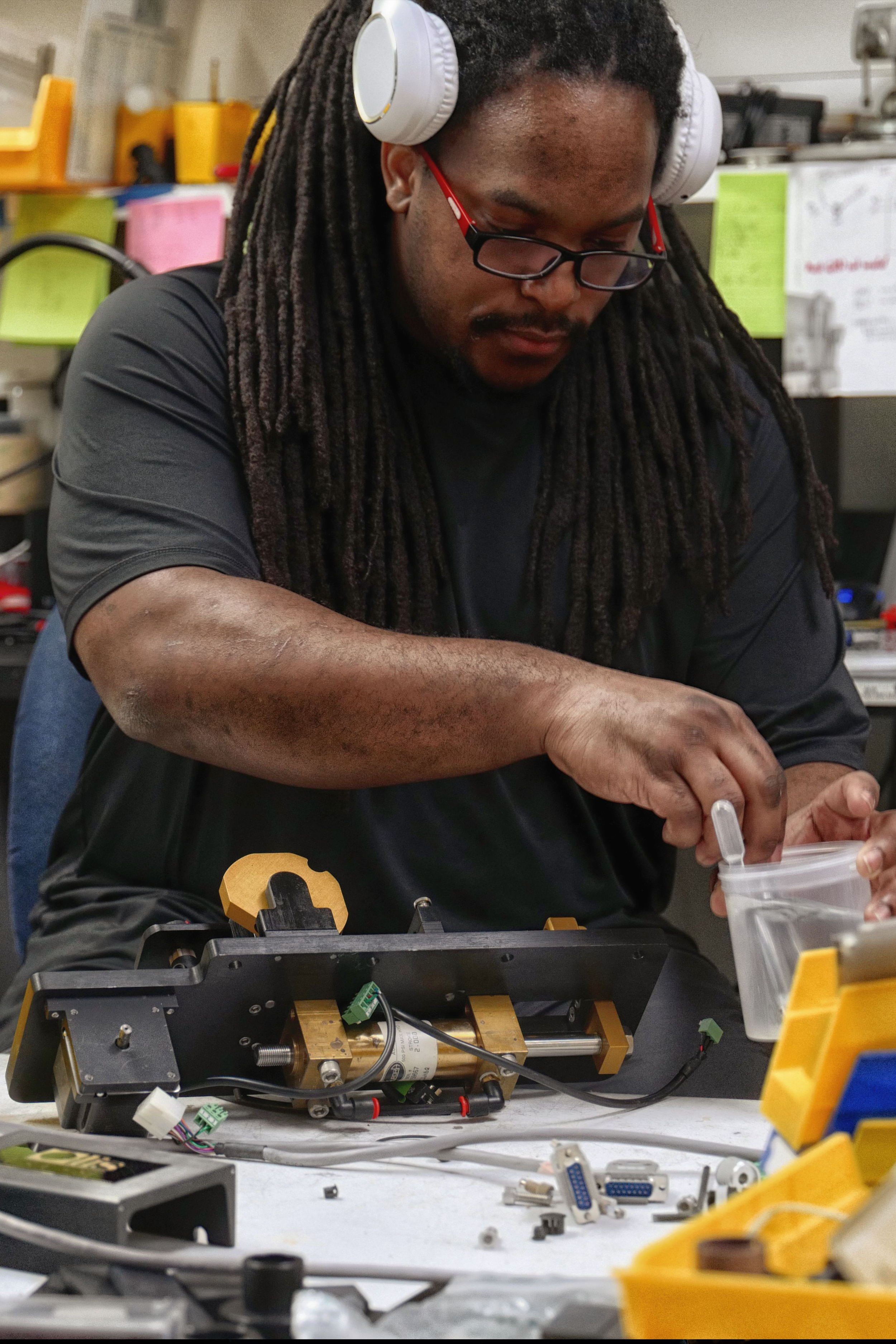How Spectrophotometers can Save You Time, Stress, and Money.
What Does Uv/vis/nir Mean?
Table of ContentsUnknown Facts About Uv/visSome Of Uv/vis/nirUv/vis Fundamentals ExplainedAll about Uv/vis/nirSome Known Factual Statements About Uv/vis/nir

Spectrophotometry is a tool that hinges on the quantitative analysis of particles depending on how much light is taken in by colored compounds.
Top Guidelines Of Circular Dichroism
A spectrophotometer is commonly utilized for the measurement of transmittance or reflectance of services, transparent or nontransparent solids, such as sleek glass, or gases. Numerous biochemicals are colored, as in, they soak up noticeable light and for that reason can be determined by colorimetric treatments, even colorless biochemicals can frequently be converted to colored substances ideal for chromogenic color-forming responses to yield compounds ideal for colorimetric analysis.: 65 However, they can also be created to measure the diffusivity on any of the listed light varieties that normally cover around 2002500 nm using different controls and calibrations.
An example of an experiment in which spectrophotometry is used is the decision of the stability constant of a solution. A certain chemical response within a service might take place in a forward and reverse instructions, where reactants form items and items break down into reactants. Eventually, this chemical response will reach a point of balance called a balance point.
Some Ideas on Circular Dichroism You Need To Know
The quantity of light that goes through the solution is a sign of the concentration of specific chemicals that do not allow light to go through. The absorption of light is due to the interaction of light with the electronic and vibrational modes of particles. Each kind of molecule has a private set of energy levels associated with the makeup of its chemical bonds and nuclei and thus will absorb light of specific wavelengths, or energies, resulting in unique spectral homes.
The use of spectrophotometers covers different clinical fields, such as physics, materials science, chemistry, biochemistry. UV/Vis/NIR, chemical engineering, and molecular biology. They are extensively used in numerous markets consisting of semiconductors, laser and optical manufacturing, printing and forensic assessment, as well as in labs for the research study of chemical substances. Spectrophotometry is frequently used in measurements of enzyme activities, determinations of protein concentrations, decisions of enzymatic kinetic constants, and measurements of ligand binding reactions.: 65 Ultimately, a spectrophotometer has the ability to figure out, depending on the control or calibration, what substances exist in a target and exactly just how much through calculations of observed wavelengths.
Invented by Arnold O. Beckman in 1940 [], the spectrophotometer was created with the help of his colleagues at his company National Technical Laboratories established in 1935 which would become Beckman Instrument Company and ultimately Beckman Coulter. This would come as an option to the previously developed spectrophotometers which were not able to absorb the ultraviolet properly.
The Only Guide to Uv/vis/nir
It would be found that this did not give satisfying results, therefore in Design B, there was a shift from a glass to a quartz prism which permitted for better absorbance results - UV/Vis (https://soundcloud.com/julieanndesalorenz30606). From there, Model C was born with a change to the wavelength resolution which wound up having three systems of it produced
It was produced from 1941 to 1976 where the price for it in 1941 was US$723 (far-UV devices were an alternative at additional expense). In the words of Nobel chemistry laureate Bruce Merrifield, it was "probably the most important instrument ever developed towards the advancement of bioscience." Once it became discontinued in 1976, Hewlett-Packard developed the first commercially available diode-array spectrophotometer in 1979 referred to as the HP 8450A. It irradiates the sample with polychromatic light which the sample soaks up depending upon its residential or commercial properties. It is transferred back by grating the photodiode array which discovers the wavelength region of the spectrum. Considering that then, the creation and execution of spectrophotometry gadgets click has actually increased tremendously and has ended up being one of the most ingenious instruments of our time.

Not known Factual Statements About Uv/vis/nir
Historically, spectrophotometers utilize a monochromator including a diffraction grating to produce the analytical spectrum. The grating can either be movable or repaired. If a single detector, such as a photomultiplier tube or photodiode is utilized, the grating can be scanned stepwise (scanning spectrophotometer) so that the detector can measure the light intensity at each wavelength (which will correspond to each "action").
In such systems, the grating is fixed and the strength of each wavelength of light is determined by a various detector in the selection. Additionally, most modern-day mid-infrared spectrophotometers use a Fourier transform technique to acquire the spectral details - https://disqus.com/by/julieanndesalorenz/about/. This strategy is called Fourier change infrared spectroscopy. When making transmission measurements, the spectrophotometer quantitatively compares the fraction of light that travels through a reference service and a test service, then electronically compares the intensities of the two signals and calculates the portion of transmission of the sample compared to the recommendation requirement.
